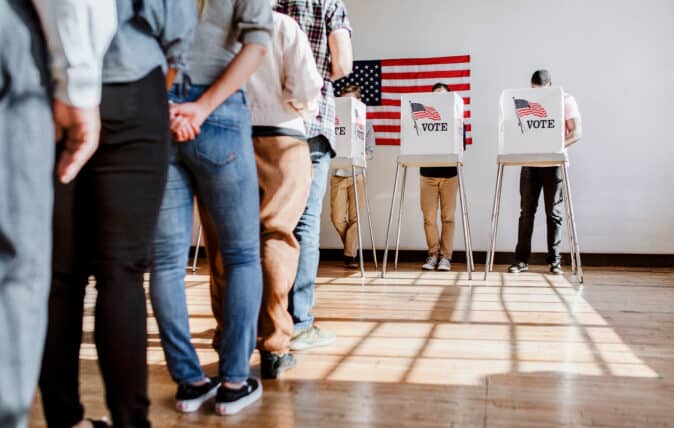Our New “Days of Rage” Protest Activity and Considerations for Corporate Security
![Copy of RESOURCE CARD - [name] (12) Copy of RESOURCE CARD - [name] (12)](https://ontic.co/wp-content/uploads/2024/05/Copy-of-RESOURCE-CARD-name-12-1035x627.png)
3 Takeaways
- Perspective is important, 1968-1972 was much more violent in America
- Understand your unique threat landscape based on brand, leadership, and locations
- Recognize the ramifications to the psychology of the workplace
Relentless Risk
The world seems to be on fire, fueled by the Hamas attack on Israel and the subsequent Israeli Defense Force (IDF) invasion of Gaza. As a result, protests have taken off like wildfire across many college campuses. As the New York Times reports, “In many students’ eyes, the war in Gaza is linked to other issues, such as policing, mistreatment of Indigenous people, racism, and the impact of climate change.” However, perspective is important for security practitioners and protectors.
Historical Lens
As a nation, the United States has been here before, and protest movements in the 1960s and 1970s were much more violent, fueled by the Vietnam War, social and racial justice issues, and student movements. Let’s also not forget the 1968 assassinations of Martin Luther King, Jr. and Senator Robert F. Kennedy, North Korea seizing the USS Pueblo, and the Soviet Union’s invasion of Czechoslovakia.
In a single 18-month period from 1971 to 1972, the FBI counted 2500 bombings on American soil, almost five a day. The Weather Underground, a small violent cell and off-shoot of the Students for Democratic Society, carried out 25 bombings alone, targeting the U.S. Capital, the Pentagon, the California Attorney General’s office, a Wall Street restaurant, and a New York City Police Department substation; and in 1975, an IED was placed inside the men’s room at the State Department damaging twenty offices on three floors.
Threat Informed
Encampments and facility takeovers have been set up across many universities in opposition to Israeli actions in Gaza after Hamas launched a terror attack on October 7th. Importantly, protestors are “calling on universities to divest from companies they say are supporting those military efforts.” Additionally, there are indicators that not all participating in the activity are students. The University of Texas at Austin indicated that 56% of recent arrests were unrelated to the institution. UT Austin suggested, “These numbers validate our concern that much of the disruption on campus over the past week has been orchestrated by people from outside the University.”
Campuses have long been bastions of free speech, acting as bully pulpits for many voices of expression, regardless of political stance. But when the voice turns towards violence and fringe factors begin to appear within the body, it’s important that safety and security teams consider the implications and begin setting up protective measures for both people and assets.
For those of us in the industry, there are many things to factor in when understanding this unique threat landscape. For example, disruption of facilities (including the targeting of physical locations), targeting of organizational leadership, disinformation of reported activities, schools where high-net-worth people have family attending or names on the buildings, heightened insider risk, and disruption of local areas surrounding the affected campus.
Enhanced security measures are more than warranted for those companies “outed” by the protest movements. For example, corporate security and executive protection staff should plan for protests by fringe elements at your facilities and executives’ residences, along with mailing suspicious items to the executive homes and offices. Thus, enhanced surveillance detection and counter-surveillance, along with mail screening, should be implemented. Additionally, CEOs engaged in business with the Intelligence Community, the U.S. Department of Defense, or the Israeli Defense Forces are at a higher risk of being singled out by the threat actors. Technology can help significantly at this moment, including monitoring alt-social channels for adverse intelligence signals.
If your business is impacted, consider the following:
- Plan for Protests
Develop a comprehensive plan to monitor protests by fringe elements.
Consider potential risks and vulnerabilities at company facilities and executives’ residences. - Mail Screening
Implement protocols for screening incoming mail to executive homes and offices for suspicious items.
Train/Review staff on proper procedures for identifying and handling suspicious packages. - Surveillance Detection
Enhance surveillance detection capabilities both at company facilities and executives’ residences.
Utilize technology to monitor for any suspicious activities or individuals. - Counter-Surveillance Measures
Implement measures to detect and deter any attempts at surveillance by threat actors.
Train security personnel to identify signs of surveillance and respond appropriately. - CEO Risk Assessment
Identify CEOs’ engagement and exposure.
Conduct/Review risk assessments to determine potential threats and vulnerabilities specific to company facilities and executives’ residences. - Threat Monitoring
Leverage tools that include monitoring alt-social channels for adverse intelligence signals.
Stay updated on emerging threats, effectively gather intelligence, and mitigate risks. - Regular Review and Adaptation
Regularly review and update security protocols and measures in response to evolving threats and changes in the security landscape.
Conduct periodic assessments to ensure security measures remain effective and address emerging risks.
Practitioner Strain
The continuous exposure to threats, violence, and media coverage within the context of campus protests can have powerful effects on individuals tasked with monitoring and conducting protective operations. Beyond the immediate concerns for physical safety, there are profound psychological implications for these individuals, as the perpetual state of alertness and vigilance can lead to increased stress, anxiety, and emotional exhaustion.
Individuals involved in monitoring activities may experience heightened hypervigilance and burnout, which can impact their overall well-being and performance. Similarly, those tasked with conducting protective operations face immense pressure to maintain the safety of all stakeholders, as the weight of responsibility coupled with the situation’s intensity can take a toll on their mental and emotional resilience. Leaders must recognize this and take action to continue to talk to, listen to, and gauge any pressures in their organizations.
Recognizing the impact on the workforce is crucial, and it’s essential to maintain perspective. While the current climate may feel intense, historical contexts reveal more violent periods, such as the tumultuous “Days of Rage” in the 1960s and 1970s or post-9/11.
Perspective to Proactive
The multifaceted challenges posed by campus protests amidst the backdrop of global turmoil should be reflected within historical precedents and contemporary realities; by doing so, we gain valuable insights into the complexities of the current landscape. As we navigate these turbulent times, we must maintain perspective and recognize the importance of proactive security measures.








